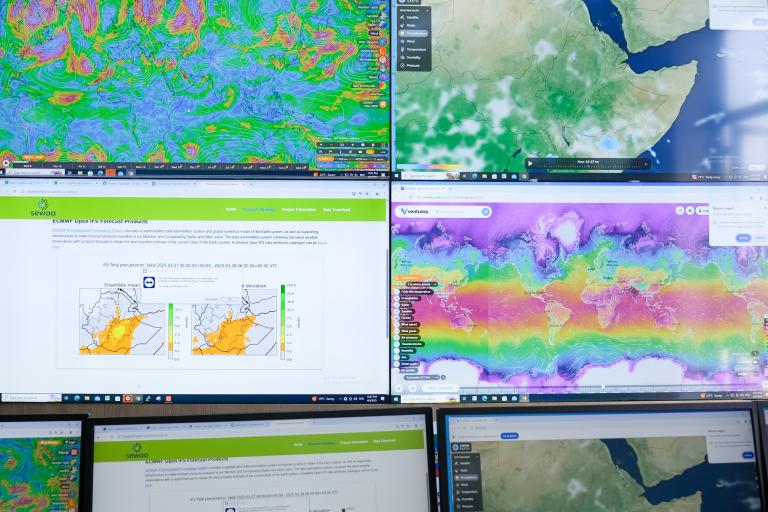Across Ethiopia, Sudan, South Sudan, Uganda, and Rwanda-nations stitched together by the River Nile's timeless flow-a new current of hope is rising, fueled by hydrometeorological and socioeconomic data and a common shared vision.
As mentioned in our latest report on the state of global water resources , climate has turned water into a wild card , dealing floods or droughts with little warning and threatening lives and livelihoods in a region that thrives on the River Nile's pulse. Yet here, through the Water at the Heart of Climate Action project, these five countries are threading a brighter narrative into the global Early Warnings for All initiative. Their goal: enhance climate, weather, and water monitoring to deliver precise flood and drought warnings, empowering stakeholders with impact-based forecasts for timely action.
True climate action pivots on water-and the data that turns it from a harbinger of disaster into a safety shield. At a workshop in Addis Ababa, over forty delegates from these nations converged, their voices merging like the river's tributaries. "It's not just Early Warnings for All," said Ramesh Tripathi, WMO Flood Manager, at the plenary's opening, "it's early warnings with all." That "with" ignites the effort, blending local expertise and cross-border collaboration into a life-saving system that acts before the skies burst or the wells dry.
The Nile knows no borders, nor can the warnings that protect its people. For too long, these nations monitored their waters in isolation, each a lone thread in a fraying fabric. Now, "Water at the Heart"-a partnership of Red Cross organizations, UN agencies, and the Government of the Netherlands-weaves those threads into a unified tapestry. Satellites, sensors, and national models converge into a basin-wide view, delivering warnings that don't just say "rain's coming" but "this rain will flood Juba's market by Tuesday." This is impact-based forecasting-the needle that stitches raw data into a lifeline.

Ethiopia, through the Ethiopian Meteorological Institute, showcases the potential. Its systems already predict rainfall with growing accuracy, but the next step is sharper: pinpointing the fallout. Will that rain wash out a bridge in Amhara or isolate a clinic in Gambela? Across the basin, the project layers in human context-population maps, flood histories, riverside rhythms. In conflict-ravaged Sudan, it's river levels; in Uganda, dam schedules; in South Sudan, vulnerable flood zones. Rwanda adds its piece, and the puzzle snaps into focus: a shared, urgent picture no single nation could see alone.
Hope lies not in perfection but in progress. The tools-satellites, sensors, software-exist; the challenge is connection. This isn't about rewriting the Nile's story but reading it better, together, so warnings arrive with clarity and trust that spur action. "Water at the Heart" is the Nile Basin's unique thread in the Early Warnings for All mission, aiming to protect everyone by 2027. While the world battles wildfires and hurricanes, this region's challenge is distinctly hydro-a riverine puzzle solved through cooperation as much as calculation.

In this corner of the world, water binds these nations, for better or worse. Supported by the Netherlands' Ministry of Foreign Affairs, "Water at the Heart" bets on the better. As climate pressures mount, the Nile Basin spins a tale of possibility-data flowing as freely as the river, warnings reaching all, with all. It's a hydro-hope worth championing, a ripple that could swell into a global tide.







